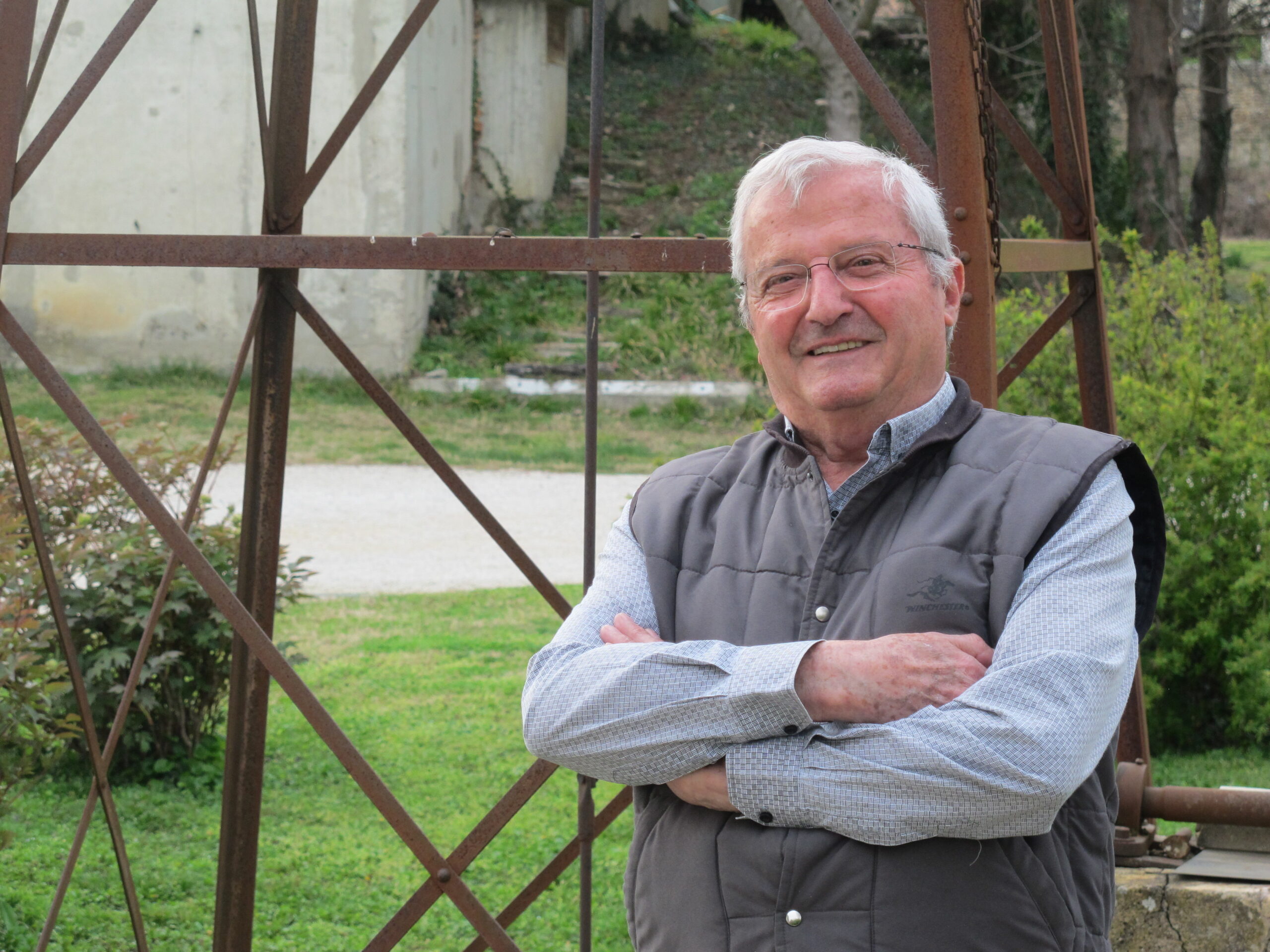Interview with Jean-Louis Grippat, former winemaker in Saint-Joseph and Hermitage

Interview with Jean-Louis Grippat at his home in Tournon, 20th March 2020.
Edited for clarity and brevity.
Can you tell me a bit about the history of your estate?
I took over from my parents. My father died when I was relatively young. But the domaine continued; my mother carried on with a member of staff, and after my studies I joined her in 1956. There were still some fruit trees but I specialised in wine. I had parcels in Saint-Joseph and Hermitage. Very little Hermitage, a hectare and a half in Les Murets. Mostly white, I had very little red. And 6ha in Saint-Joseph; the lieu-dit Saint-Joseph, the Vignes de l’Hospice and Le Clos. I retired in 2001.
You sold your parcels to Mr Guigal didn’t you? Why did you choose the Guigals?
Yes. Firstly because they offered a good price! You only sell once. But it’s not the main reason. The main reason is the quality of their work, and also to open up the market a bit.
Talking about Saint-Joseph, does the appellation have a leader of sorts?
You’d have to go back. There was a group that made some studies to improve the quality of the wine – bottling, tasting, we’d taste and criticise the wines between us with a consultant oenologist. And we progressed a lot. In Cornas there was Clape, Voge; in Mauve, Bernard Gripa, Maurice Courbis, Pierre Gonon, Gustave Coursoudon, Raymond Trollat, and some others whose names I forget.
What were the faults that you found at the time?
Volatile acidity. Lack of cleanliness. A lot of faults!
And brett?
We still didn’t recognise it. Identifying brett is very recent, we didn’t know what it was. The same as malolactic – that was the 1970s, very recent. Our wines would referment in spring, we didn’t know what it was. You’d just keep the wines a year or two in barrel to stabilise it naturally. Now we know it’s malo.
Even 15 years ago people talked about Cornas as having an animal side.
Yes, horsey. That was part of the perfume, the clients accepted because they were used to it.
Now when I taste Cornas, I taste brett very rarely. Are we actually missing something now? Was it the real Cornas, or was it a fault?
No, it wasn’t a fault, it was part of the aroma, people liked it! Now it’s more on the fruit than these more unusual aromas.
Now the style is to be totally clean, to have no brett at all.
But if you continue like that, you’ll end up with a sterile wine. Now commerce dictates a wine must be stable, that it can withstand transport. Clients rarely have cellars so it needs to be drinkable young. Wines need to be easier to drink, not too acidic, not too tannic. The opposite of what it was before. The way of life of today’s consumer has changed the way in which wine is made.
It’s a bit of a shame.
Yes, in a certain sense. But we’ve gained in finesse, in perfume, in subtlety.
Your wine was known for its finesse.
Well I don’t like wines that are too alcoholic and I don’t like new oak. And we make the kind of wines we like ourselves, right? Unconsciously. The point at which a son takes over from his father, the wine is no longer the same.
And the style of wine here, is it going in a good direction?
It’s good, but it’s getting a bit standardised, there’s not much difference between one wine and another. Before, there was a lot more difference. Even between appellations, between Cornas and Saint-Joseph the wines would be completely different.
To buy a copy of my latest book, Wines of the Rhône, please click here.


[…] Jean Louis Grippat is an icon of the Saint Joseph appellation famously selling the vignes de l’hospice above the town of Tournon to E.Guigal in the late 1990s. […]